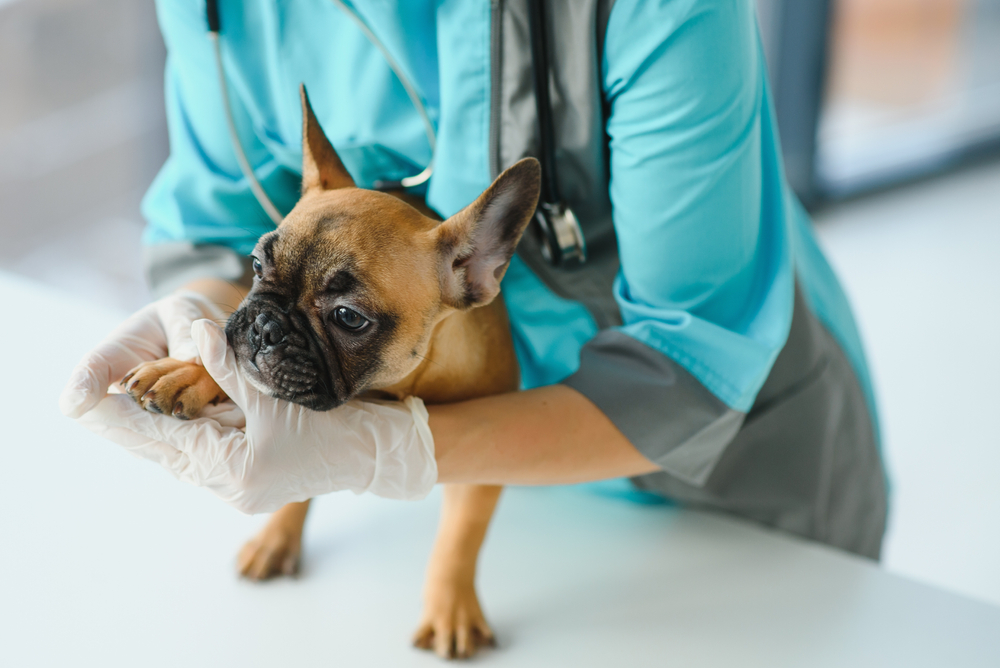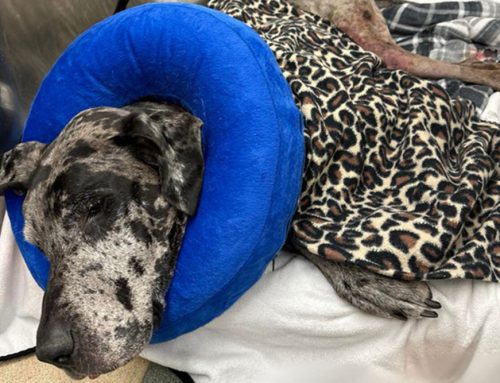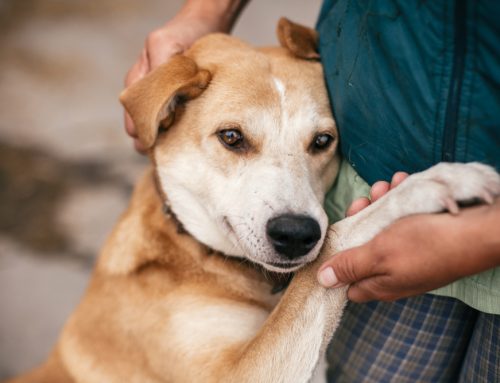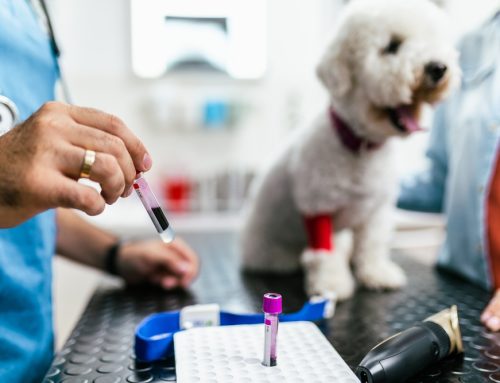No pet owner wants to think about their pet and cancer, but each year, millions of dogs and cats are diagnosed with various cancer types. While these increases are concerning, advances in veterinary medicine are allowing pets affected by cancer to live longer. Early detection is key to improving your pet’s prognosis, so our Marcy Veterinary Clinic team wants to help by answering frequently asked questions about pet cancer, so you are prepared if your pet is affected.
Question: What cancer types affect pets?
Answer: Cancer is uncontrolled cell division and growth that can occur anywhere in the pet’s body. The most common cancer that affects cats and dogs is lymphoma, which has multiple forms and can attack lymph nodes throughout the pet’s body, lymphoid tissue in the pet’s chest, the gastrointestinal tract, or specific organs outside the lymphatic system. Following are other cancers common in dogs and cats.
Dog cancers
- Mast cell tumors — Mast cells are involved in the immune response when a pet encounters an allergen. These tumors frequently form on the skin, but can spread to other body parts and are often extremely aggressive.
- Osteosarcoma — Osteosarcoma is the most common bone cancer in dogs, and most frequently affects large and giant breeds. The cancer typically attacks the dog’s limb bones, and metastasis can occur.
- Hemangiosarcoma — Hemangiosarcoma most commonly attacks the spleen, liver, heart, and skin. This disease typically goes undetected until the advanced stages, providing a poor prognosis.
Cat cancers
- Mammary gland carcinoma — Exposure to specific hormones, such as progesterone, increases mammary gland carcinoma risk. These tumors typically present as a small nodule on the abdomen or chest. Unspayed females are at highest risk, and domestic shorthairs and Siamese have a higher incidence.
- Squamous cell carcinoma (SCC) — SCC typically attacks light or unpigmented skin, and is commonly located in the nose, ears, and eyelids.
- Fibrosarcoma — Fibrosarcomas originate from connective tissue. They are the second most common oral tumor in cats, and also can occur at vaccination and medication injection sites.
Q: What signs indicate cancer in pets?
A: Knowing what signs indicate cancer can facilitate early detection. While not all pets affected by cancer exhibit signs, some warning signs include:
- Abnormal swellings
- Non-healing wounds
- Weight loss or inappetence
- Bleeding or discharge, including vomiting and diarrhea
- Offensive odor
- Difficulty swallowing
- Exercise intolerance
- Persistent lameness
- Difficulty breathing, urinating, or defecating
Q: How is cancer diagnosed in pets?
A: If our veterinary team suspects your pet may have cancer, potential diagnostics include:
- Blood work — Cancer is not always detectable on routine blood work, but a complete blood count (CBC) and biochemistry profile provides information on your pet’s overall health and helps us determine if their organs are compromised.
- Fine needle aspirate — If your pet has a lump or swelling, our team may perform a fine needle aspirate to obtain a sample for testing. This procedure involves using a needle and syringe to aseptically suction fluid or cells from the area.
- Biopsy — In some cases, our veterinary team may obtain a piece of the mass for microscopic evaluation.
- X-rays — We may recommend X-rays to look for bony tumors or screen for metastasis.
- Ultrasound — Our veterinary team may perform an ultrasound if your pet has an internal tumor.
- Advanced imaging — In some cases, advanced imaging, such as computed tomography (CT) or magnetic resonance imaging (MRI), is needed to learn the tumor’s location and spread.
Q: How is cancer treated in pets?
A: Your pet’s cancer is treated based on the type, as well as the lesion size and spread in the body. Treatment options include:
- Surgery — Surgery is commonly used to control or eliminate the local cancer. Goals differ, depending on the situation:
- Curative surgery — When the surgery removes the tumor completely, including complete margins, the procedure is considered curative. In some cases, additional treatments, such as chemotherapy, are required to prolong survival.
- Palliative surgery — This surgery type attempts to improve, but not necessarily prolong, the pet’s life (e.g., removing a bleeding mass, or amputating a painful limb).
- De-bulking surgery — This surgery type involves partial tumor removal to enhance the efficacy of other treatment modalities.
- Chemotherapy — Chemotherapy is drug therapy designed to kill or slow cancer growth and can be used alone or in conjunction with surgery or radiation. Fortunately, pets don’t typically suffer as many side effects as human chemotherapy patients.
- Radiation — This treatment modality uses ionizing radiation to damage the tumor cell and cause tumor cell death. Radiation can be used to shrink or control local tumors, or to provide pain relief or improved function in patients with advanced cancers.
- Novel treatments — Some pets affected by cancer may benefit from novel therapies, such as gene therapy or immunotherapy, which are typically used in conjunction with other treatment modalities.
Q: Can pet cancer be prevented?

A: While not all pet cancers can be prevented, you can take steps to decrease your pet’s risk, including:
- Monitoring your pet’s weight and maintaining them at a healthy weight
- Scheduling annual wellness checks
- Exercising your pet regularly
- Examining your pet for changes at least monthly
- Seeking veterinary care if your pet is exhibiting concerning signs or behavioral changes
- Avoiding second hand smoke
- Avoiding excessive sun exposure
- Researching your pet’s breed to determine if they are at increased disease risk
Cancer is an upsetting diagnosis, but early detection can improve your pet’s prognosis. If you are concerned about signs you see in your pet, contact our Marcy Veterinary Clinic team, so we can determine the cause and devise an appropriate treatment plan.








Leave A Comment